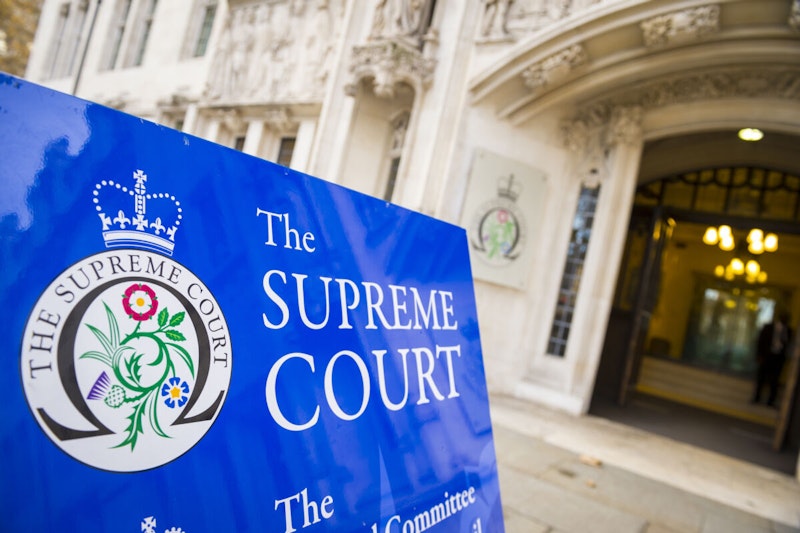Teaching Activities
Case Update: Trustees of the Barry Congregation of Jehovah’s Witnesses v BXB (2023)
- Level:
- A-Level, BTEC National
- Board:
- AQA, Edexcel, OCR, Eduqas, WJEC
Last updated 4 May 2023
The current approach to the law on vicarious liability has been confirmed in the recent Supreme Court appeal case of Trustees of the Barry Congregation of Jehovah’s Witnesses v BXB (2023)...

This appeal concerned a female congregation member who was raped in 1990 by church elder Mark Sewell after conducting door-to-door visits for the religious group near Cardiff, resulting in Sewell being convicted of rape and being sentenced to fourteen years imprisonment in 2014. The victim brought an action against the church that they were vicariously liable for the rape and was awarded £62,000 in damages from them at the High Court, which on appeal the Court of Appeal agreed with.
The courts found that for the claim to be successful two elements had to be proven:
- 1. The tortfeasor must be an employee of the employer using the traditional tests of employment or there is a relationship akin to employment between the tortfeasor and employer.
- 2. The tortious actions must either fall within the course of employment or for criminal intentional torts they must be sufficiently closely connected to the employment
In this case, for the first stage of the test it was seen that the relationship between the Jehovah’s Witnesses and Mark Sewell, as an elder, was akin to employment. Thus, the Supreme Court followed the same reasoning as the lower courts and found there was a relationship between the two parties and this test was therefore satisfied.
It was however in the second test that their conclusions differed. The second question focussed on whether the rape was sufficiently closely connected to Sewell’s work for the Jehovah’s Witnesses so as to make them vicariously liable for his actions. The lower courts had all found that it was, however the Supreme Court did not.
First, the rape did not occur whilst Sewell was carrying out any activities for the employer as had been seen in the earlier case of Lister v Hesley Hall (2002), as the rape happened after the pair had finished conducting their house-to-house visits for the church and had gone to Sewell’s home. The victim had gone here to provide emotional support to Sewell and his increasing alcohol consumption. Therefore at this time he was not exercising any position of the church so was not abusing any trust given to him in this capacity, rather he was abusing his friendship with the victim. Thus it was seen by the Supreme Court that the appeal should be allowed as the second part of the question was not satisfied; Sewell’s action were not sufficiently closely connected with his employment. All five Supreme Court justices sitting agreed, stating that “There is no convincing justification for the Jehovah’s Witness organisation to bear the cost or risk of the rape committed by Mark Sewell.”

Read the full judgement here : https://www.supremecourt.uk/ca...

Questions to consider
- What other type of instances would give rise to an employment relationship being imposed using the akin test?
- What are the ‘traditional’ tests of employment?
- What is the justification for imposing liability on an employer for acts of an employee?
- Do you agree with this judgement and the decision reached by the Supreme Court that the second limb of the test for vicarious liability failed due to the facts of this case not passing the ‘close connection’ test?
Revise and test yourself on Vicarious Liability by watching our catch up Study Live Stream on Vicarious Liability here - A-Level Law | Study Livestream | Vicarious Liability | tutor2u
You might also like
Tort Law | Classroom Poster / Student Handout Set
Poster / Student Handout
Key Case Law Developments in Vicarious Liability
26th February 2023